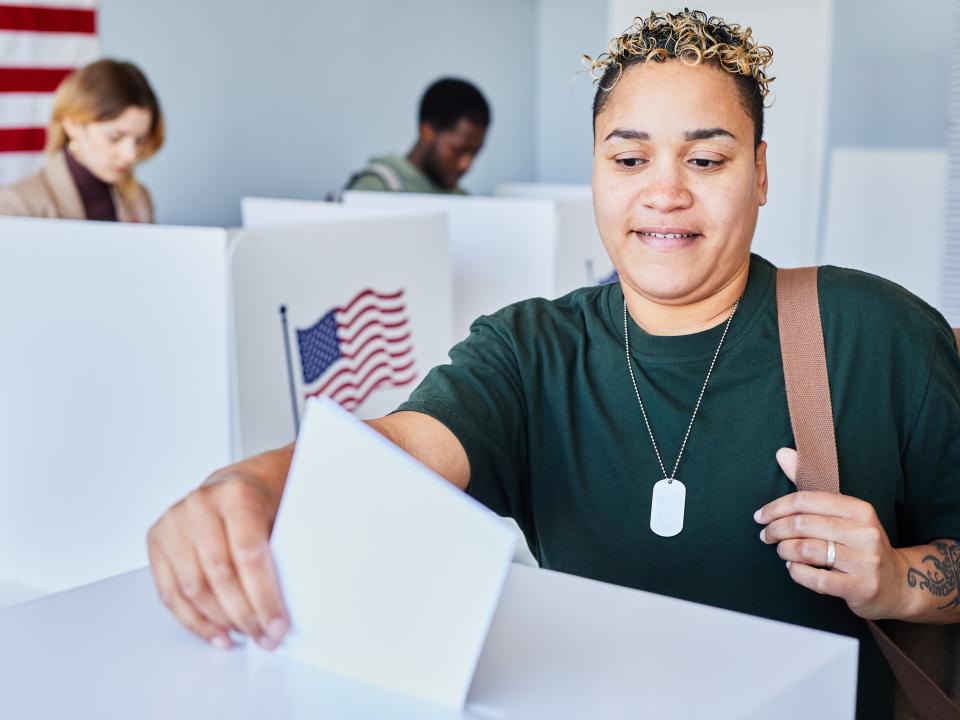Universities prepare students to become lifelong active citizens. They have political societies, regular internal elections, courses that develop critical thinking and the ability to evaluate different sources of information, and access to social and environmental volunteering opportunities. But many universities stop short of encouraging their students to register to vote, follow local and general elections and ultimately go to the polling station on election day. This is a missed opportunity to set students on the path to becoming lifelong voters.
Young people are less likely to vote than any other age group. But anyone working in higher education will attest to how much students care about the world around them, so how can we help them translate their passion into political participation?
- Resource collection: Higher education’s role in upholding democracy
- How universities can embed democratic principles and practices into the student experience
- Fake news and disinformation abounds, but what can universities do?
Voter registration and voting for the first time
Once someone has voted for the first time, the likelihood of them voting again skyrockets, research shows, and that is where universities and peers play an important role in breaking down barriers to casting that first vote.
We have tested several approaches to peer-led interventions that put young people at the heart of getting their peers registered and to the polling station. We are under no illusion we have all the answers, but we have some insights that we continue to test and develop.
Don’t start with politics
Ask students what issues matter to them and why, get them fired up and ready to stand up for what they believe in. Only then introduce the democratic levers they can pull to get their voices heard. The first and foremost of which is voting.
Sometimes efficiency isn’t everything
Whilst it is not always the most efficient way to get from A to B, and definitely not the easiest, projects that are genuinely student-led create long-lasting impact. For us, this means putting students in the driving seat at all stages, from design to delivery and even how you evaluate the project.
Peer-led initiatives can feel counterintuitive when you have a specific approach, outcome or time frame in mind. It can be difficult to let students experience a controlled amount of failure, especially if you can see it coming and it delays progress. But giving students a platform and a safety net to test ideas (even if you’ve tried them before) and to gain first-hand experience of dusting themselves off and trying again builds many valuable graduate attributes, from problem-solving to teamwork and resilience.
Create a toolkit, not a set of instructions
Peer-led doesn’t mean not equipping student participants with a framework and set of tools based on your experience and lessons from previous student cohorts. For example, we have created an online resource hub, which includes a project planning template, presentations created by past students and posters from a range of sources. We upload them all in editable formats and encourage every new cohort of students to amend the resources or create and share new ones to complement or replace the existing materials and advice. Each year they come up with new ideas that enhance our shared toolkit.
Let them see for themselves
There are some things on which students will never take your word until they’ve tried it for themselves. These include how hard it is to get everyone to remember their National Insurance number, which they need to register to vote, and to get people to respond to surveys and feedback after an event. We see our role as coach and champion to build their resilience as opposed to taking the wind out of their sails too early – sometimes naivety is helpful.
Show that you value their time with money
Crucially, we pay students for their time. This has the double benefit of demonstrating to them that their contribution and time is valued but also enables us to hold them to account against clear and contractual expectations. We have found this type of agreement leads to better engagement and retention when projects get tough compared with volunteers.
We employ more than 20 project-based students for less than it would cost us to hire one full-time employee. This creates challenges, of course, but it brings many benefits. Chiefly that they can reach so many more students than you can as a “responsible adult”. They can engage disenfranchised students, who are often in groups that are typically marginalised, repeatedly and in relevant, fun ways, easily adapting their approach to resonate with different groups of young people.
Why does this matter?
Employing students equips them with graduate attributes, the tools to speak up effectively on issues that matter to them and be leaders in their community. This helps students develop their curiosity, political awareness and a genuine desire to participate in our democracy.
Rebecca Deegan is CEO and founder of I have a voice, which works with organisations to equip young people with the tools and confidence to take action on the issues that matter to them and their community.
If you would like advice and insight from academics and university staff delivered direct to your inbox each week, sign up for the Campus newsletter.




comment